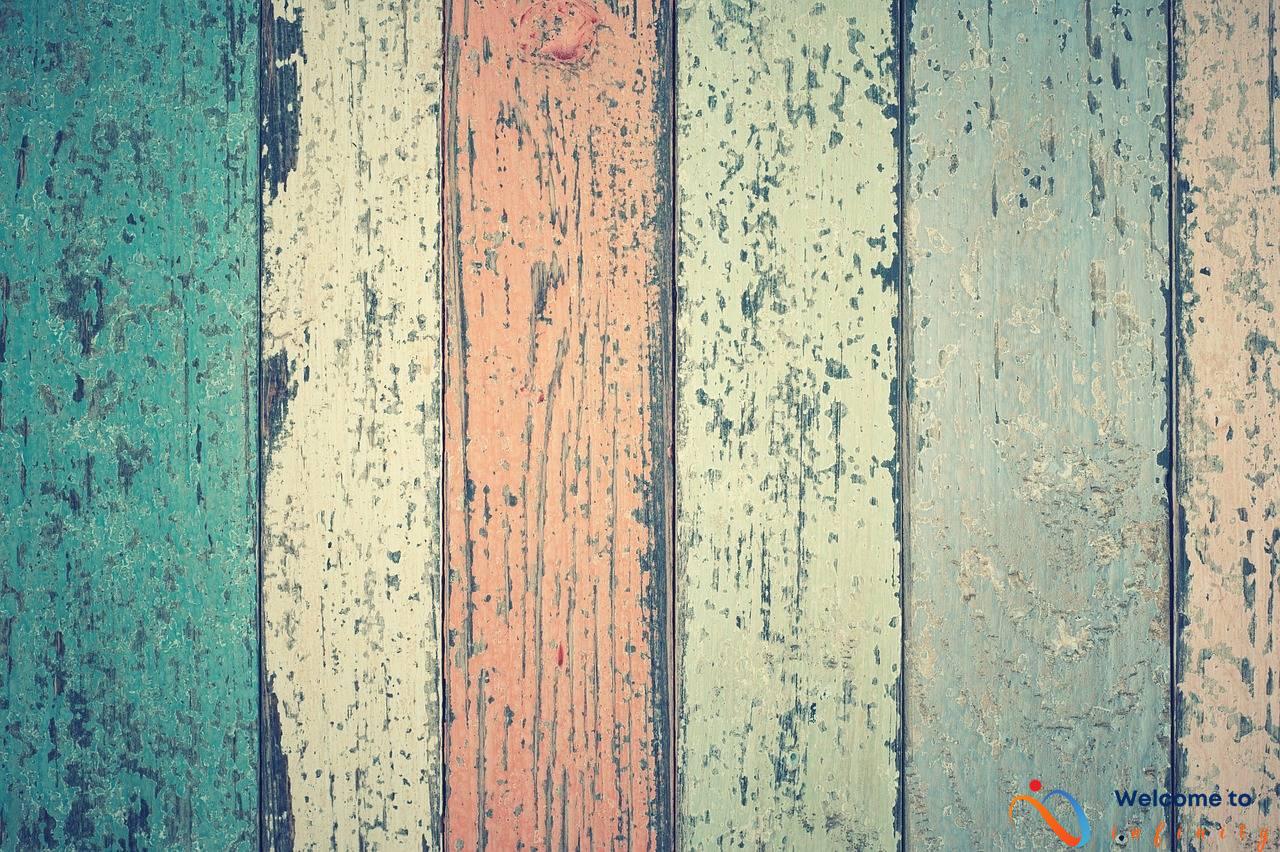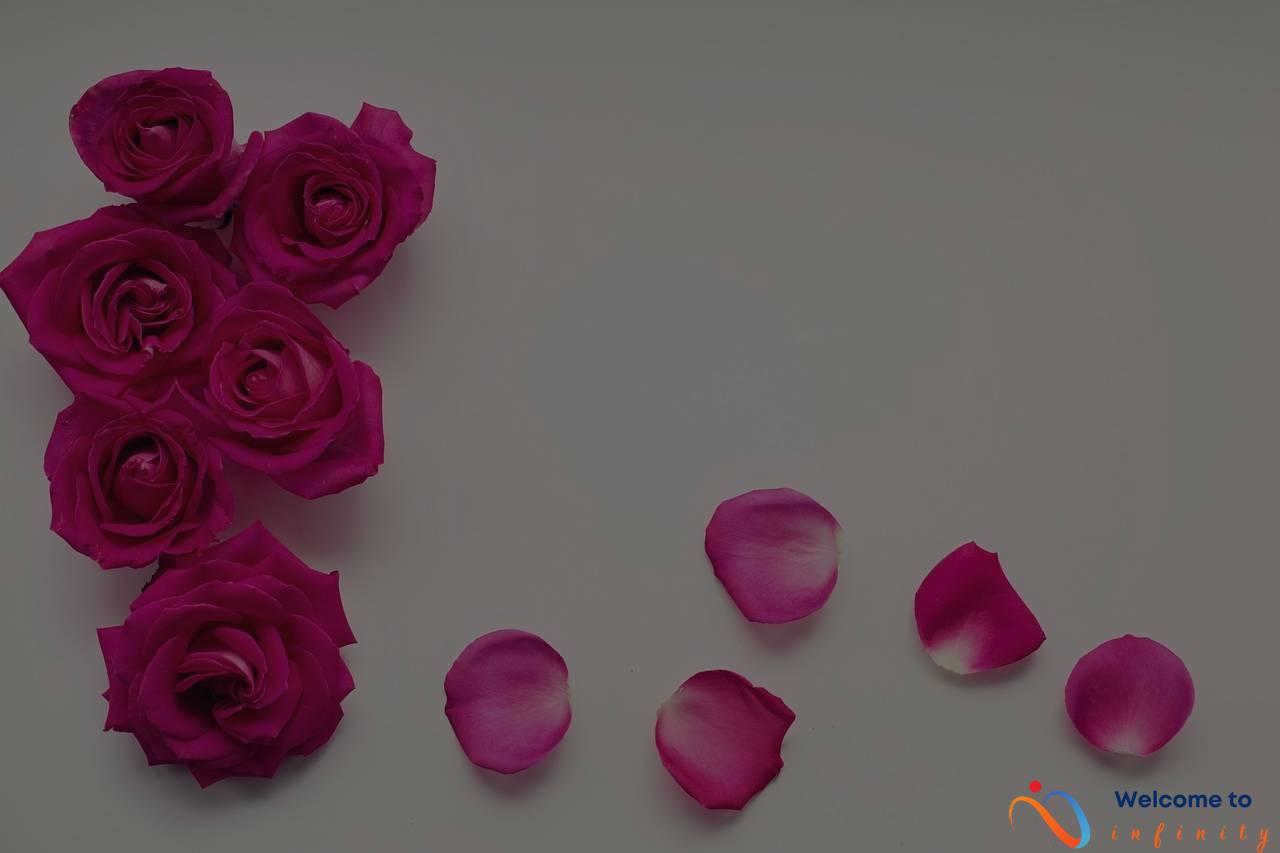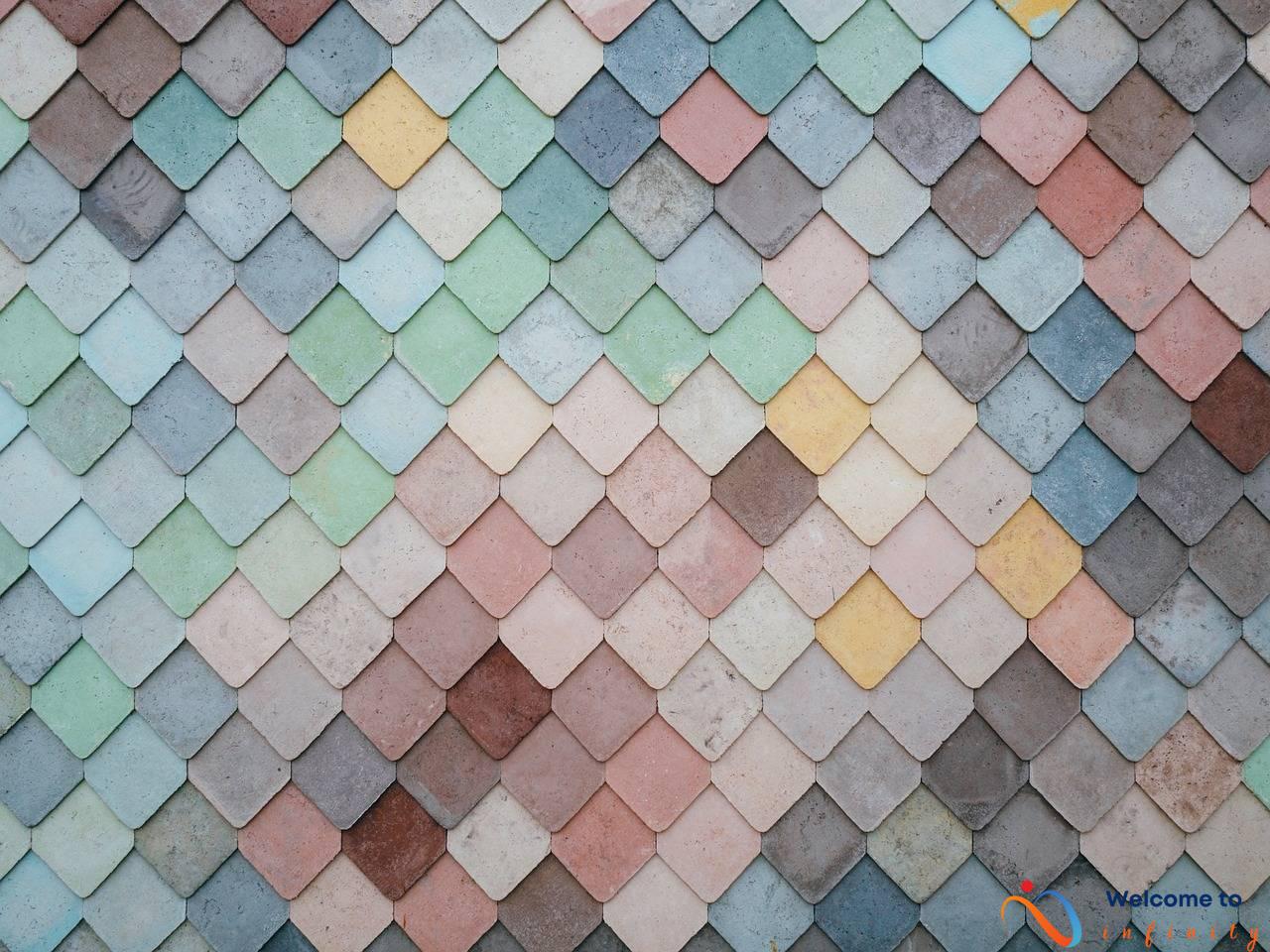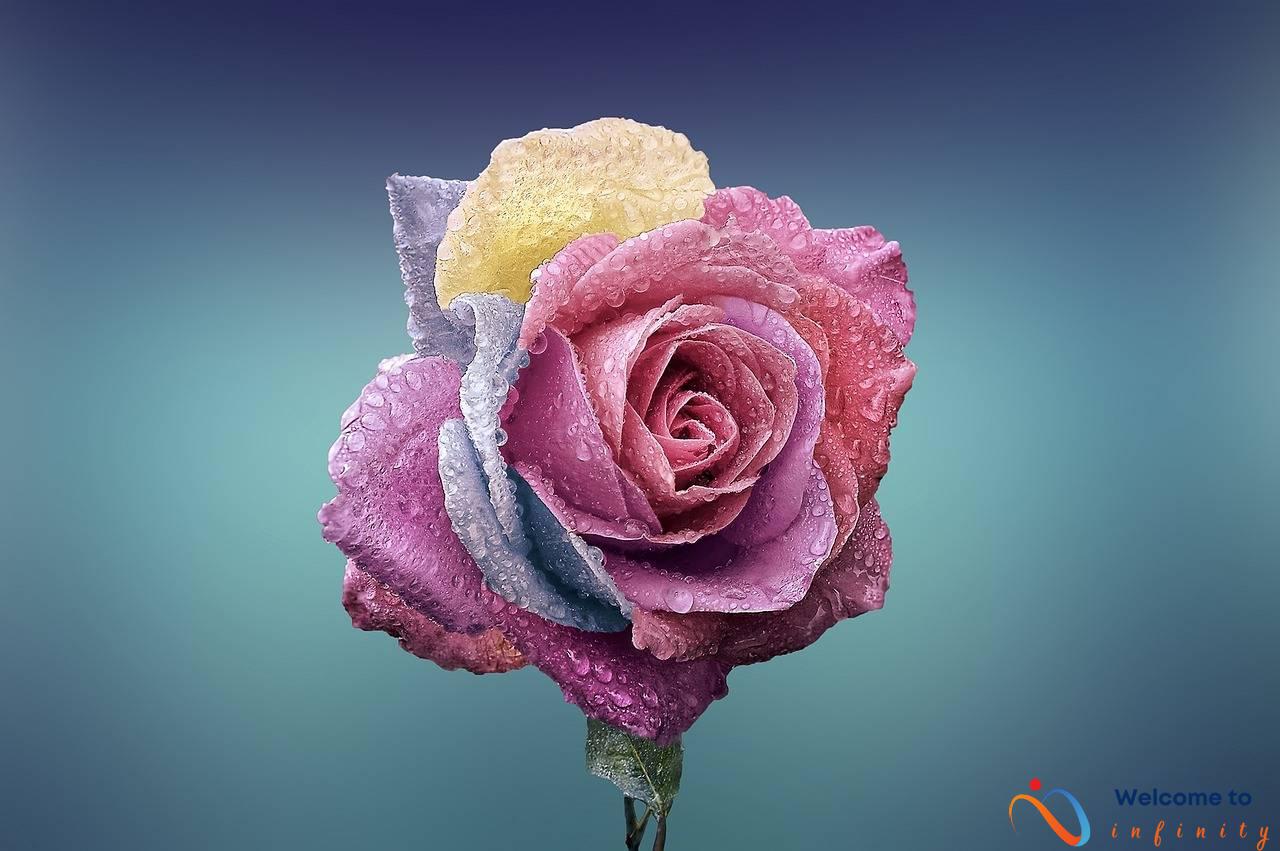If you're looking for ways to keep your natural hair looking healthy and beautiful, you've come to the right place. In this article, we'll explore some helpful tips and tricks for maintaining your locks.
The first step in caring for your natural hair is understanding your hair type. There are different hair types, from straight to curly to kinky. Knowing your hair type will help you determine the best way to care for your hair. Whether you have 4a, 4b or 4c hair type, you can always find tips here to maintain it.
Hydration is key to keeping your hair healthy, so it's important to find ways to moisturize your hair and prevent damage. A great way to do this is by using DIY hair masks made from natural ingredients such as avocado, honey and coconut oil. Hot oil treatments also work wonders in strengthening your hair and keeping it healthy.
Another great way to care for your natural hair is through protective styling. Braids and twists are popular styles that can help your hair retain length and prevent damage. Sleeping on silk or satin pillowcases can also prevent breakage and promote healthy hair.
Finally, using the right tools and techniques can make a big difference in the health of your hair. Natural hair brushes are best for detangling your hair, and low manipulation styling techniques can help protect your hair and prevent breakage.
By following these tips and tricks, you can keep your natural hair looking healthy and beautiful.
Understanding Your Hair Type
One of the most important aspects of maintaining healthy natural hair is understanding your hair type. Hair types fall into four categories: straight, wavy, curly, and coily. Straight hair tends to be fine and easily manageable, while wavy hair has a slight curl and can be frizzy. Curly hair has a more defined curl pattern, and coily hair is tightly coiled with minimal definition.
Once you have determined your hair type, you can tailor your hair care regimen to better suit your hair's needs. For example, curly and coily hair types generally require more moisture to prevent dryness and breakage. Co-washing, which is washing the hair with conditioner only, can be a great way to add moisture and keep hair healthy.
In addition to knowing your hair type, it's important to be aware of your hair's porosity, which relates to how well your hair absorbs and retains moisture. High porosity hair quickly absorbs moisture but may have trouble retaining it, while low porosity hair requires more work to absorb moisture. Understanding your hair's porosity can help you select products and techniques that are better suited to your hair type.
To care for your hair type, it's important to use products that are formulated to your specific hair needs. Look for natural hair care products that are free of harsh chemicals and sulfates, which can strip your hair of its natural oils. A regular deep conditioning treatment can also help keep your hair healthy and moisturized.
- Straight hair: use lighter products and avoid heavy oils that can weigh it down
- Wavy hair: use hydrating shampoos and conditioners to tame frizz
- Curly hair: use moisturizing products with a heavier texture to define curls
- Coily hair: use rich oils and butters to moisturize the hair and prevent breakage
By understanding your hair type and its needs, you can create a hair care routine that helps your natural hair thrive. Experiment with different techniques and products until you find what works best for you and enjoy healthy, beautiful tresses.
The Importance of Hydration
One of the most important things for maintaining healthy natural hair is to keep it hydrated. This means ensuring that your hair is moisturized and protected from dryness, which can cause breakage and damage.
One way to ensure that your hair stays hydrated is to drink plenty of water. This is because dehydration can cause hair to become dry and brittle, making it prone to damage. Additionally, you should use a moisturizing shampoo and conditioner that are suitable for your hair type. It's important to avoid using harsh sulfates and silicones that can strip hair of its natural oils and cause further dryness.
Another method for keeping your hair hydrated is to use natural oils such as coconut oil, olive oil, or jojoba oil. These oils penetrate the hair shaft, keeping it moisturized and preventing water loss. You can apply these oils to your hair in-between washes or as a pre-wash treatment. Alternatively, you can use a leave-in conditioner or hair oil to keep your hair moisturized throughout the day.
Protein treatments are also beneficial for hair hydration, as they help to strengthen and restore damaged hair. These treatments can be found in the form of hair masks or treatments that are applied to the hair and left on for a period of time. Ensure that you follow the instructions on the product carefully, as overuse can lead to protein overload and brittle, weak hair.
- Drink plenty of water to keep hair hydrated from within
- Use a moisturizing shampoo and conditioner suitable for your hair type
- Avoid using harsh sulfates and silicones that can strip hair of its natural oils
- Use natural oils such as coconut oil, olive oil, or jojoba oil
- Apply protein treatments to strengthen and restore damaged hair
By following these tips, you can keep your natural hair hydrated and healthy, preventing damage and breakage and ensuring that your hair looks beautiful and vibrant.
DIY Hair Masks
If you're looking for a natural and affordable way to nourish and revitalize your hair, DIY hair masks may be the perfect solution. Not only can they help improve your hair's health, but they're also easy to make and can be tailored to your specific hair needs.
One popular DIY hair mask recipe is the honey and avocado mask. To make this mask, mash one avocado and mix in two tablespoons of honey. Apply the mixture to your hair and let it sit for 30 minutes before rinsing it out with cool water. The avocado helps moisturize and strengthen your hair while the honey adds shine and softness.
Another great hair mask is the egg and olive oil mask. Beat one egg and mix in three tablespoons of olive oil. Apply the mixture to your hair and let it sit for 20-30 minutes before rinsing it out with cool water. The egg helps nourish your hair with protein while the olive oil adds moisture and shine.
If you're dealing with dry hair, the banana and coconut oil hair mask may be the perfect remedy. Mash one ripe banana and mix in two tablespoons of coconut oil. Apply the mixture to your hair and let it sit for 20-30 minutes before rinsing it out with cool water. The banana helps moisturize and soften your hair while the coconut oil adds nourishment and shine.
Remember, when making DIY hair masks, it's important to use natural and high-quality ingredients. Use a natural hair brush to help distribute the mask evenly throughout your hair. These homemade hair masks can be used once or twice a week depending on your hair's needs.
Giving your hair a little extra TLC can go a long way in improving its overall health and appearance. Try out these DIY hair mask recipes to give your locks the nourishment they deserve!
Hot Oil Treatments
Hot oil treatments are a great way to strengthen and nourish your natural hair. The heat helps to open up the hair cuticle, allowing the oil to penetrate deeply and provide moisture and nutrients.
To do a hot oil treatment at home, start by choosing an oil that works for your hair type. Coconut oil and olive oil are popular choices, but you can also use avocado oil, castor oil, or jojoba oil. Heat up the oil in a microwave-safe container or on the stove until it's warm but not too hot.
Apply the oil to your hair, starting at the roots and working your way down to the ends. Use your fingers to massage the oil into your scalp and through the hair, ensuring that every strand is covered. Cover your hair with a plastic cap or wrap it in a warm towel to help the oil penetrate more deeply.
Leave the oil on for at least 30 minutes, but you can leave it on for longer if you have the time. Some people even leave it on overnight for maximum benefits. When you're ready to rinse it out, use warm water and a gentle shampoo to remove all the oil.
Hot oil treatments are especially helpful for those with dry, damaged, or color-treated hair. They can be done once a week to keep your hair healthy and strong. Give it a try and see the amazing benefits for yourself!
Protective Styling
Protective styling is essential for natural hair, especially for those who want to retain length and prevent damage. The basic concept of protective styling is to keep your hair ends tucked away and prevent them from rubbing against clothing, which can cause breakage.
There are several protective styles that you can try out, each with its level of difficulty and style. Box braids, twists, cornrows, and even weaves can be used to protect your hair. However, be careful when using weaves, as they can cause tension and damage if installed incorrectly or left in for too long.
Besides the styles mentioned above, you can also opt for low manipulation styles such as buns, updos, and twists-outs. These styles require you to touch your hair less, and thus, helps prevent breakage and retain length.
If you're not sure how to do protective styles yourself, don't hesitate to seek professional help. A stylist can assist you in choosing the right style for your hair type, length, and lifestyle.
It's essential to remember that protective styling alone is not enough to keep your hair healthy. You need to combine it with a healthy hair routine, including regular conditioning, moisturizing, and avoiding harsh chemicals and high heat styling.
Overall, protective styles are a great way to promote hair growth and keep your hair healthy. Experiment with different styles, and find the ones that work best for you and your hair type.
Braids and Twists
Braids and twists are a popular protective style for natural hair. Whether you prefer box braids or Senegalese twists, these styles can be worn in many different ways. They protect your hair from damage caused by environmental factors and daily manipulation.
But it's important to remember that even with these styles, proper hair care is essential. When washing, gently massage your scalp to clean it, then rinse thoroughly. Avoid using hot water, as it can cause hair to become brittle and prone to breakage.
When moisturizing, use a light mist of water-based leave-in conditioner for braids and twists. Use a wide-tooth comb or your fingers to distribute the product throughout your hair, being careful not to pull too hard on your braids or twists. It's also important to keep your scalp moisturized by applying natural oils or a light hair oil to the scalp and hair shaft.
Finally, don't leave your braids or twists in for too long. Ideally, styled hair should be taken down after six to eight weeks. Leaving them in for too long can cause unnecessary tension on the hair, which can lead to breakage and hair loss.
- Remember to:
- Wash gently using lukewarm water
- Moisturize with a water-based leave-in conditioner
- Apply natural oils to scalp and hair
- Take down the braids or twists after 6-8 weeks
By following these simple steps, you can keep your natural hair healthy and beautiful, even when wearing protective styles like braids and twists.
Silk and Satin
Sleeping on silk and satin pillowcases or using silk and satin hair wraps can have remarkable benefits for your hair. Ordinary cotton pillowcases can cause friction between your hair and the pillow, leading to tangles and breakage. Cotton is also absorbent, which can result in your hair losing its natural oils. On the other hand, silk and satin are smooth and non-absorbent, and they help your hair retain its oils and moisture.
Silk and satin also reduces friction, and thus, reduces hair breakage. They not only prevent damage but also help your hair maintain its natural shape and prevent frizz. Moreover, silk and satin pillowcases are hypoallergenic, making them a great option for people with sensitive skin and scalp.
If you don't have a silk or satin pillowcase, wrap your hair in a silk or satin hair wrap before going to bed. It will provide the same benefits as a pillowcase and protect your hair from damage. Using a silk or satin hair wrap can also help preserve your hairstyle and ensure that your hair stays in place throughout the night.
In summary, investing in silk or satin pillowcases or hair wraps can significantly benefit your hair. It not only prevents breakage and tangles but also helps your hair maintain its natural oils and moisture, reduce frizz, and preserve your hairstyle. Consider adding this simple yet effective step to your natural hair routine.
Tools and Techniques
When it comes to caring for your natural hair, it's important to use the right tools and techniques to avoid damage and promote a healthy scalp. Using the wrong tools or not using them properly can lead to split ends, breakage, and even hair loss.
One tool to avoid is the traditional hairbrush with plastic bristles. These types of brushes can be damaging to curly and coily hair types, causing breakage and split ends. Instead, opt for a natural hair brush made with boar bristles, which can help distribute natural oils throughout your hair, reducing dryness and breakage.
Another common mistake is using the wrong type of elastic bands, which can also lead to breakage. Avoid tight rubber bands or bands with metal clasps, which can tug and pull at your hair. Instead, opt for fabric-covered or spiral hair ties that won't cause damage.
Technique is also important when it comes to styling your natural hair. Avoid using high heat from styling tools like straighteners and curling irons, which can be damaging to your hair follicles. Instead, embrace your natural texture and use styling products like gel or mousse to enhance your curls or waves.
Additionally, low-manipulation styling techniques can help protect your hair and prevent breakage. Try wearing your hair in protective styles like braids or twists, which can keep your hair strands from rubbing against your clothing and causing damage. Sleeping on a silk or satin pillowcase can also help reduce friction and prevent breakage.
By using the right tools and techniques and avoiding damaging practices, you can promote healthy hair growth and maintain a beautiful and natural head of hair.
Natural Hair Brushes
Using a natural hair brush can be a game-changer for maintaining the health and beauty of your natural hair. Not only do they help to distribute natural oils, but they also provide gentle detangling and exfoliation. Natural hair brushes come in a variety of materials such as boar bristle, bamboo, and wood, each with their unique benefits.
Boar bristle brushes, for example, are perfect for those with finer hair because the bristles are gentle enough to prevent breakage but firm enough to distribute oils evenly. On the other hand, bamboo brushes are eco-friendly and provide a gentle massage to your scalp while detangling your hair. Wooden brushes, like bamboo, have natural static-reducing properties and promote healthy blood circulation.
Choosing the right brush for your hair type is essential to maintain the health and beauty of your hair. For thick, curly hair, you may want to opt for a paddle brush with wider-spaced bristles to prevent breakage. For fine, straight hair, a boar bristle brush can do wonders to distribute natural oils and add shine.
It's important to note that using the wrong brush can do more harm than good. Avoid using brushes with plastic bristles, as they can create static and cause breakage. When brushing your hair, start from the ends and work your way up to prevent pulling and unnecessary stress on your hair.
Investing in a natural hair brush is a simple but effective step towards healthy and beautiful hair. With the right brush, you can promote natural oil distribution, gentle detangling, and exfoliation while avoiding breakage and damage.
Low Manipulation Styling
When it comes to taking care of your natural hair, one of the essential things is low manipulation styling techniques. These techniques are all about keeping your hair protected from damage caused by excessive manipulation, heat, or styling products.
One great way to style your hair with minimal manipulation is by doing protective styles such as braids, twists, or buns. These styles help to keep your hair neatly tucked away, preventing breakage and split ends. Another alternative is to wear a wig or scarf to give your hair and scalp a break from styling, heat and harsh chemicals used in some styling products.
Using a silk or satin pillowcase is another technique that can minimize manipulation. Sleeping on a cotton pillowcase can promote friction, leading to tangled hair and breakage. But sleeping on silk or satin can help to reduce friction, keeping your hair smooth and prevent breakage.
Remember, the less you manipulate your hair, the fewer chances of resulting in damage. However, finding the right balance that keeps your hair looking neat and tidy while minimizing manipulation is key.
Conclusion
After reading through this article, you should be equipped with all the knowledge and tools necessary to care for your natural hair. Remember that understanding your hair type and keeping it hydrated is key. Experiment with DIY hair masks and hot oil treatments to find what works best for your hair. Protective styling is also important, and you can try braids and twists or sleeping on silk and satin to prevent breakage.
Make sure you are using the right tools and techniques, such as natural hair brushes and low manipulation styling. By following these tips and tricks, you can maintain healthy and beautiful natural hair without the need for complicated routines or expensive products.
Don't forget the importance of consistency and patience when it comes to caring for your hair. Keep up with a regular hair care routine and be gentle with your locks to avoid damage. With the right care, your natural hair can thrive and look amazing every day!












